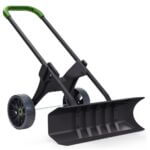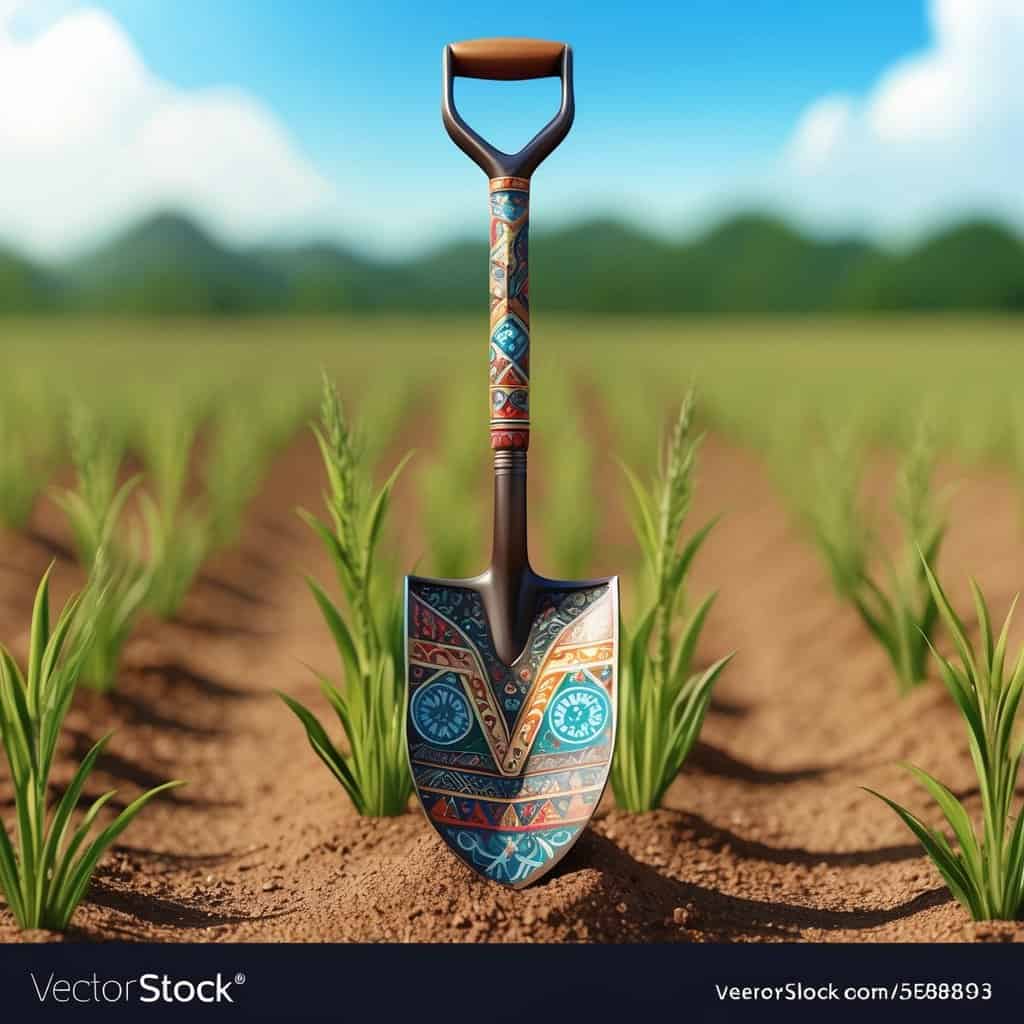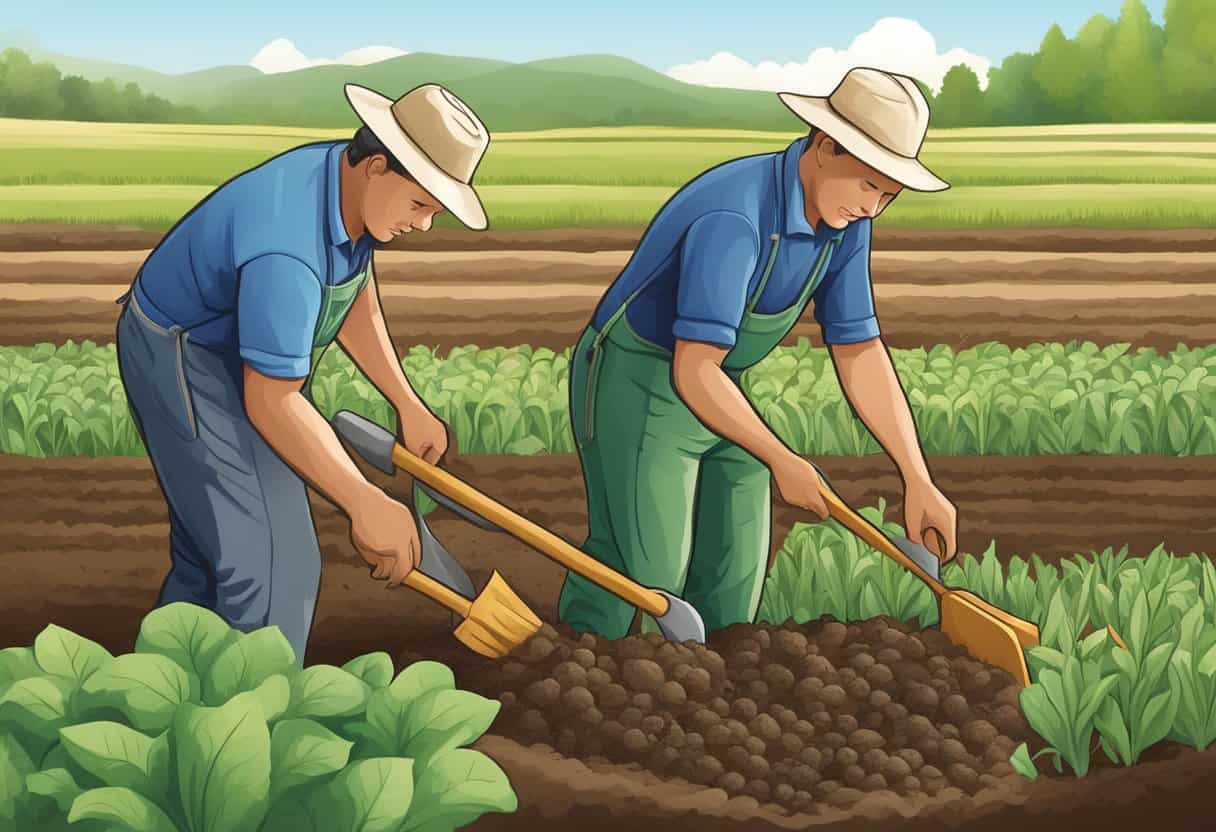The shovel, about as simple and as ubiquitous a tool as there is.
We don’t often appreciate everything that the shovel has made possible throughout human history.
Sure, we might think about the shovel when we have some earth to move in our back garden or a hole to dig. The odds are pretty good that we only think of the shovel as a piece of wood and some scrap metal material rather than one of the most effective tools ever made.
Digging through the history of the shovel shows just how vital this tool has been to our development.
We would not have the kind of society we have today without the shovel, born and created from our ancestors’ needs.
Table of Contents
History- When Was the First Shovel Invented?
The earliest examples of humans using shovels appear on the historical record pop up in the Neolithic age.
This is a block of time between 10,000 BC and 4500 BC, a chunk of human history that researchers call the “New Stone Age.”
The Neolithic period’s time frame depends on where you lived and how advanced the culture was in this location.
For example, In North Africa, the Neolithic age began in 7,500 BC.
However, in South Africa, the Neolithic period began in 4,000 BC. Word travelled much slower then, as compared to the seconds, it takes to receive information now, something to think about for sure.
Neolithic Shovels
The Neolithic age runs from the earlier Stone Age transition through the earliest recorded examples of farming.
It is the transition phase to an agricultural civilization.
Ancient shovels have been found in various settlements throughout the Middle East to northern Europe.
These finds shine a light on our ancient ancestors during this block of time, especially when it comes to their ingenuity.
Our Neolithic ancestors used larger animals’ shoulder blades as a rudimentary spade or shovel.
Several archaeologists believe that these bone pieces would have then been attached to wooden handles with leather straps.
This connection also illustrates how we got the words spatula, spade, and shovel in the first place.
These terms have etymological connections to the name “scapula,” which is now a medical term for a bone in the shoulder.
The odds are pretty good that these bone shovels would have been used primarily to move earth and rocks to create shelter, dig out fire pits.
Some surmise that the shovels were also used to dig and look for insects and other critters for food.
This shovel was also required to dig trenches or utilized for burials.
Generally, their use was to reshape the land for living and comfort – not for farming so much, but for creating rudimentary settlements.
One of the most interesting things about Neolithic bone shovels is that they were used worldwide.
Even though these cultures obviously didn’t communicate with one another, they all utilized the shoulder blade as a digging tool.
The Cherokee Indians in the United States, for example, were still using Neolithic bone style shovels until colonial settlers brought iron shovels.
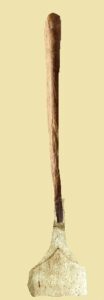
Bronze Age Shovel
The Bronze Age saw dramatic improvements in human tooling across the board, and shovels were not at all immune to these changes.
Archaeologists have discovered many wooden and bronze shovels inside an old copper mine in Cheshire in the United Kingdom and sent them to be dated.
Researchers carbon-dated the shovel all the way back to 1750 BC.
With the shovel’s overall shape and profile, the odds are pretty good that it was a replicated design.
This isn’t to suggest that our Bronze Age ancestors ran assembly lines to pump out shovels.
Still, it does indicate that these tools were significant upgrades over the bone shovels.
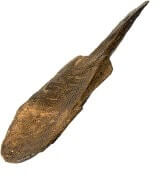
Iron Age Shovels
It was pretty natural for shovels to be improved upon once again as human beings entered the Iron Age.
Southwest Asia began to smelt iron ore for architectural purposes.
It didn’t take very long to figure out that iron was significantly stronger than bronze or wood when it came to tooling as well.
The Iron Age proceeded rapidly throughout the world, causing a collapse of the Late Bronze Age and ushering in a brand-new era of industry and technological advances.
Metalworking became the dominant technology when it came to tools during the Iron Age.
This was when mass production of tools and weapons made from iron and steel began – especially alloys with higher carbon contents.
With the experimentation and use of the new alloys, we start to see shovels produced with different purposes in mind.
From the best shovel to dig up dirt to the best shovel to scoop coal.
Before the Iron Age and the introduction of mass production, the overwhelming majority of shovels were crafted according to whatever materials were available and how much an individual had on hand.
In the Iron Age, smelting allowed for a much more systemized approach to producing tools.
This systemized approach naturally led to individuals experimenting with different designs, different profiles, and different shovel types created for specific tasks.
One of the most interesting shovels finds by archaeologists occurred in Ohio of all places.
Archaeologists were shocked to find an iron shovel, amongst many other iron tools.
Carbon dating shows that these tools were at least 600 years old. The construction was also of a similar design to what would have been found in Scandinavian areas around that same time block.
This find gives a lot more credence to the general theory of Scandinavian people arriving in America well before Christopher Columbus sailed the ocean blue in 1492.
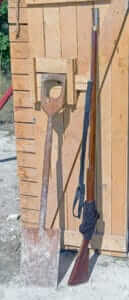
The Industrial Age Changed Shovels Forever
Shovel designs would stay pretty much the same throughout the Iron Age right up until the early 1800s.
The 1800s is when the Industrial Revolution was in full swing; transportation, particularly railroad transportation, became mainstream.
Dirt, rock, and vegetation had to be moved to accommodate new railroads that helped build brand-new towns and cities.
Plenty of ground was shoveled to develop villages and infrastructure.
Companies poured money into toolmaking to speed the process and fill the void.
Some historians estimate that hand shovels were responsible for moving thousands and thousands of tons of earth every day in the United Kingdom alone during this block of time.
Much of it was done to make way for railroad lines that still exist today.
In the 1890s, an engineer named Frederick Winslow Taylor came up with a unique way to design different shovels made of other materials.
He began changing the density and the texture of the shovels themselves to improve their overall efficiency.
Using his scientific background, Taylor also strove to find the most efficient handle materials, handle widths, and handle lengths for his company’s shovels.
Hand tools, once again, were transformed, by introducing the scientific method to further optimize shovels, they became valuable and easy to wield tools we know and love today.
Later on, particularly in the aftermath of World War II, different companies around the world started to experiment with materials like aluminum, plastic, and carbon fiber.
The Future of the Shovel
Some advances in material used to create a shovel have caught on in a big way.
Utilizing carbon fiber handles are super popular with shovel manufacturers today, reducing the weight of the tools significantly without limiting their strength along the way.
Whereas other materials such as plastic are used for sand and snow shovels.
It’s undoubtedly going to be interesting to see what kind of advancements can be made to the classic shovel going forward.
Every era in humanity probably thought that they had perfected the shovel.
Still, we’ve seen time and time again that this simple tool can do so much more than expected.
The average shovel really might not look like all that much, a simple tool head at one end attached to a handle.
There’s really not that much going on.
When you dig beneath the surface of the shovel and look at its impact on civilization, it has quite the evolution.
The shovel quite literally helped build the world that we know along every step of the journey.
This tool deserves a lot more appreciation and even reverence.
Sure, we may not see any further improvements on the “good old-fashioned shovel” ever again.
If that’s true, the odds are still pretty good that the shovel we know and trust will continue to be a big part of the human race’s future.
As long as we are interested in digging in the dirt and building something that lasts, there will be a place for shovels on the frontlines.
Next time you need to pull your shovel out of the garage or the shed, take a second to really look at it.
Appreciate how sophisticated yet straightforward this hand tool really is.


